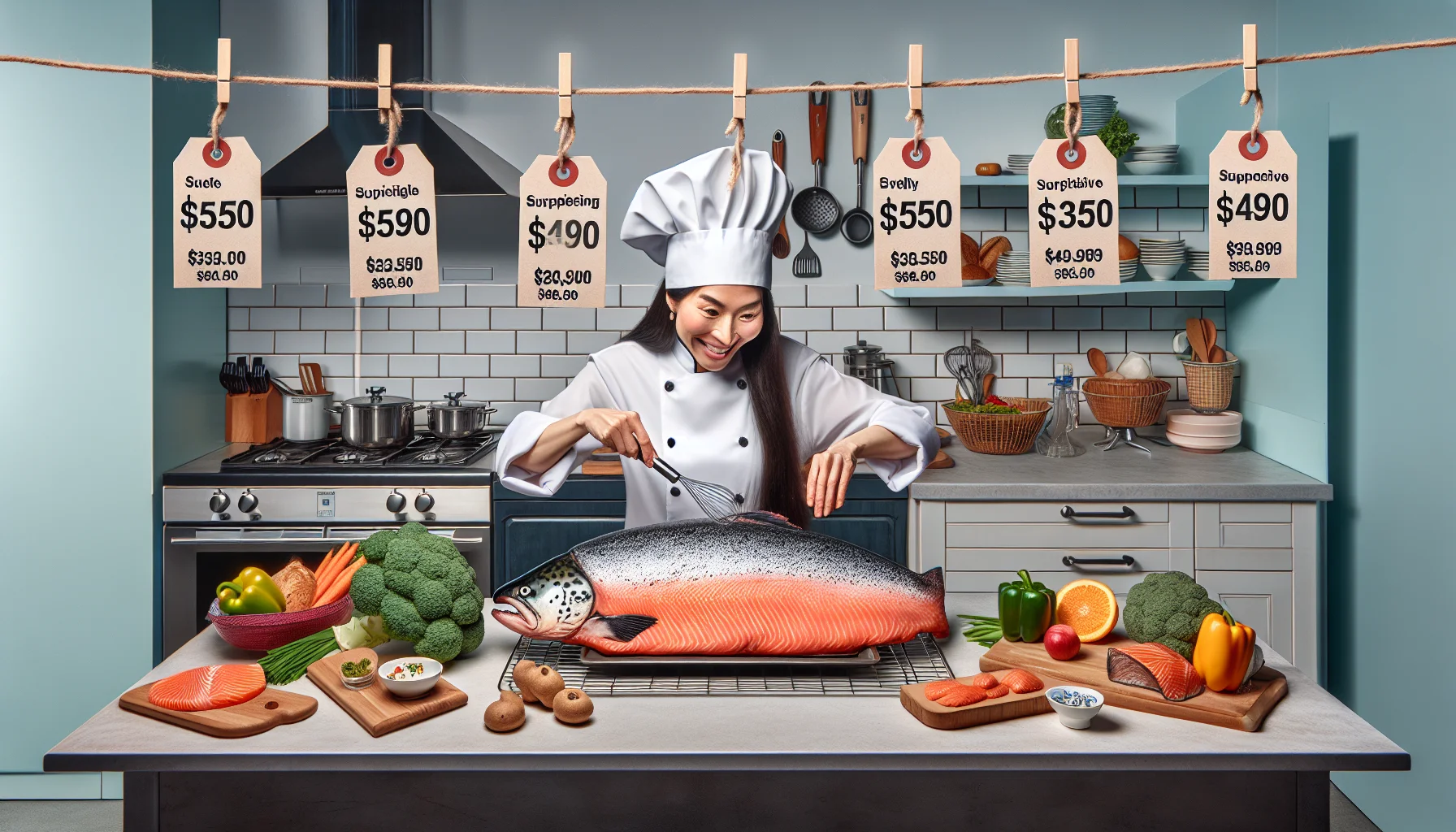Baking salmon at 350 Quiz
Test Your Knowledge
Question of
Baking Salmon at 350: A Healthy Cooking Guide
Baking salmon at 350 degrees Fahrenheit is not only a simple and efficient way to prepare this nutritious fish, but it also offers numerous health benefits. This cooking method helps preserve the omega-3 fatty acids in salmon, which are essential for heart health, brain function, and reducing inflammation. Baking at a moderate temperature like 350 degrees ensures that the salmon is cooked gently, retaining its moisture and delicate flavors without the need for excessive oils or fats. This makes baked salmon a perfect choice for those looking to maintain a healthy diet, offering a delicious way to enjoy the benefits of lean protein and essential nutrients.
Why Choose Salmon?
Salmon is not just a popular choice for its delicious taste but also for its incredible health benefits. One of the most significant advantages of incorporating salmon into your diet is its high content of omega-3 fatty acids. These essential fats are known for their role in heart health, helping to reduce inflammation, lower blood pressure, and decrease risk factors for disease.
Beyond omega-3s, salmon is an excellent source of high-quality protein. Protein is crucial for health, aiding in healing after injury, protecting bone health, and maintaining muscle mass during weight loss and the aging process. With salmon, you get a protein-packed meal that supports your body's needs without the high saturated fat content found in some other protein sources.
Salmon is also rich in a variety of vitamins and minerals, including vitamins B12 and D, selenium, and potassium. Vitamin B12 is vital for producing red blood cells and maintaining brain health, while vitamin D plays a major role in bone health and immune function. Selenium is a powerful antioxidant that helps protect your body from damage caused by free radicals and inflammation, and potassium is key for blood pressure control.
Choosing salmon as a regular part of your diet can contribute to a healthier heart, a stronger body, and a sharper mind. Its nutritional profile supports overall health and can help prevent a range of diseases. Whether grilled, baked, or poached, salmon is a versatile and delicious way to enrich your diet with essential nutrients.
Preparing Your Salmon for Baking
- Select fresh salmon by checking for bright, clear eyes and a fresh sea breeze smell.
- Clean the salmon by rinsing it under cold water and patting it dry with paper towels.
- Marinate the salmon with your choice of herbs, spices, and oils. Let it sit for at least 30 minutes to absorb the flavors.
- Preheat your oven in preparation for baking.
- Place the salmon on a lightly greased baking sheet or dish.
How to Bake Salmon at 350 Degrees
Baking salmon at a moderate temperature like 350 degrees Fahrenheit allows the fish to become fully cooked without losing its juicy tenderness. Here's a simple guide to help you achieve perfectly baked salmon every time.
Step 1: Preheat Your Oven
Begin by preheating your oven to 350 degrees Fahrenheit. This ensures that your salmon cooks evenly from the moment it enters the oven.
Step 2: Prepare the Salmon
While the oven is preheating, take your salmon fillet and place it on a clean surface. If your salmon has skin, you can leave it on as it helps retain moisture during baking. However, ensure it’s scaled and cleaned properly.
Step 3: Season the Salmon
Drizzle a little bit of olive oil over the top of your salmon for moisture. Then, season it with salt, pepper, and any other seasonings you prefer. Some popular options include dill, lemon slices, garlic, or a sprinkle of paprika for a bit of spice.
Step 4: Place Salmon in Oven
Place your seasoned salmon on a baking sheet lined with parchment paper or in a baking dish. If you're using a baking dish, there's no need for parchment paper.
Step 5: Bake the Salmon
Bake the salmon in the preheated oven for about 20-25 minutes. The exact time can vary depending on the thickness of the salmon fillet. A good rule of thumb is to bake it 10 minutes for every inch of thickness. You'll know the salmon is done when it flakes easily with a fork and reaches an internal temperature of 145 degrees Fahrenheit at the thickest part.
Once your salmon is perfectly baked, remove it from the oven and let it rest for a few minutes before serving. This allows the juices to redistribute, making your salmon moist and delicious. Enjoy your perfectly baked salmon with a side of vegetables, over a bed of rice, or as part of your favorite salad.
Healthy Side Dishes to Accompany Your Salmon
- Quinoa Salad
- Steamed Vegetables
- Sweet Potato Mash
Common Mistakes to Avoid When Baking Salmon
One of the most common mistakes people make when baking salmon is overcooking it. Salmon should be cooked until it's just barely cooked through and still moist inside. Overcooking can make the salmon dry and less flavorful.
Another mistake is underseasoning. Salmon is a rich fish that benefits from a variety of seasonings. Simple salt and pepper can enhance its natural flavors, but don't be afraid to experiment with herbs, spices, and marinades to elevate your dish.
Using the wrong cooking materials can also impact the quality of your baked salmon. Non-stick baking sheets or parchment paper can prevent the salmon from sticking, whereas aluminum foil can sometimes stick to the salmon skin and tear it. Additionally, using a pan that's too large for the amount of salmon being cooked can cause the juices to spread out and evaporate, which may lead to drier fish.
Frequently Asked Questions About Baking Salmon at 350
| Question | Answer |
|---|---|
| How long should I bake a 6 oz salmon fillet at 350 degrees? | For a 6 oz salmon fillet, bake for 20-25 minutes at 350 degrees. |
| Does the cooking time change for larger fillets? | Yes, for every additional ounce, add 2-3 minutes of baking time. |
| Should I cover the salmon while baking? | No, baking uncovered allows the top to slightly crisp, enhancing the texture. |
| How can I tell when the salmon is done? | Salmon is done when it easily flakes with a fork and reaches an internal temperature of 145 degrees. |
| Can I add vegetables to bake with the salmon? | Yes, adding vegetables like asparagus or carrots around the salmon creates a complete meal. Adjust baking time if necessary. |
| How should I store leftover salmon? | Store in an airtight container in the refrigerator for up to 3 days. Reheat gently to avoid drying out. |












